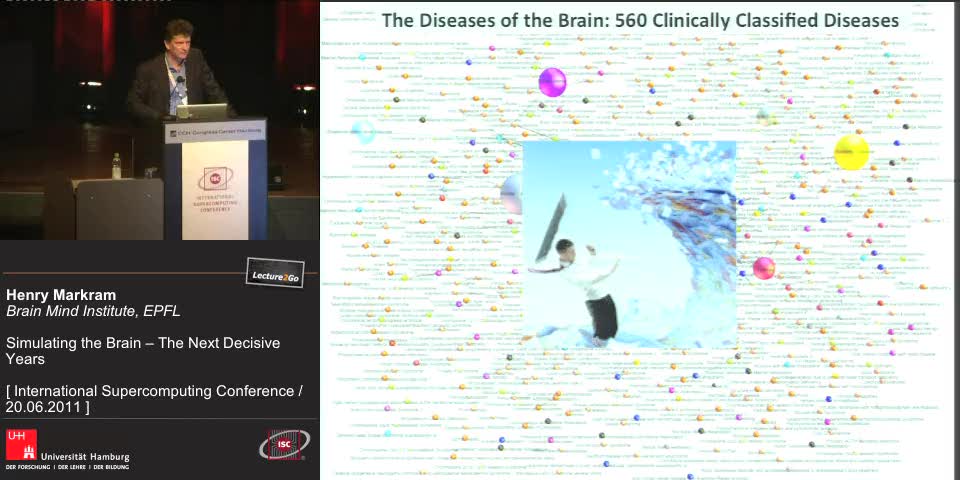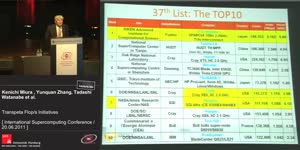ISC'11 Keynote Simulating the Brain – The Next Decisive Years - Henry Markram - Universität Hamburg
- Lecture2Go
- Videokatalog
- Sonstige Einrichtungen der UHH
- Regionales Rechenzentrum (RRZ)
- International Supercomputing Conference 2011
Videokatalog
ISC'11 Keynote Simulating the Brain – The Next Decisive Years
The 20th century witnessed a massive effort to understand the brain and its diseases that produced a vast spectrum of data. However, the knowledge generated remains fragmented and daunting to synthesize. Fortunately, three 21st century revolutions in the scientific process suggest effective strategies to build on this work. The first is a revolution in the methods used to obtain data on the structure and function of the brain. Over the last twenty years, the Human Genome Project has sparked the development of high-throughput screening technologies, automating the collection of data at nearly all levels of biological organization. The second major revolution is the emergence of informatics-based science – the combined use of computers, mathematics and statistics to make sense of this data. The new techniques are making it possible to discover correlations, revealing the biological constraints that govern the structure and function of the healthy brain at its various levels of organization. Above all, this fast evolving field is beginning to allow predictions that go far beyond the data on can obtain, promising to allow predictive reverse engineering of the brain in species, such as the Human, where we do not have access to most of the detailed structure at the cellular and molecular levels. The third revolution is simulation-based research and its application to the life sciences. Recent years have seen the introduction of supercomputers with the ability to perform 10^15 calculations per second. It is expected that already in 2018 they will be able to make 10^18 calculations per second. This enormous increase in computational power is enabling new forms of post-genomic science in which everything we know about a biological system can be systematically integrated into geometrical and computational models. Simulation based research goes far beyond correlations to testing causality. The Human Brain Project aims to embrace these three revolutions, and build a facility that is capable of modeling and simulating the brain. As it develops, the facility will allow the neuroscience and medical communities to exploit emerging information and computing technologies while simultaneously driving radical transformations in ICT itself. The real question today is not whether it is possible to reconstruct and simulate the brain, but what it will take to make it possible. Clearly, this will chart a roadmap, which requires an unprecedented global collaboration between the neuroscience, medical and ICT academic communities.
-
 00:00:00Introduction
00:00:00Introduction -
 00:00:32The Economic Burden of Brain Diseases
00:00:32The Economic Burden of Brain Diseases -
 00:04:47Simulation Based Brain Research
00:04:47Simulation Based Brain Research -
 00:11:54Modelling: Scales of Mathematical Models
00:11:54Modelling: Scales of Mathematical Models -
 00:21:01Building: the structual connectome
00:21:01Building: the structual connectome -
 00:28:04Building: the structual connectome
00:28:04Building: the structual connectome -
 00:36:53Integration: not just a modell... not just a simulation
00:36:53Integration: not just a modell... not just a simulation
-

-

-

-

-

-

-

-

-

-

-

-

-

-

-

-

-

-

-

-
 20.06.2011
20.06.2011Transpeta Flop/s Initiatives
-

-

-

-

-

-

-

